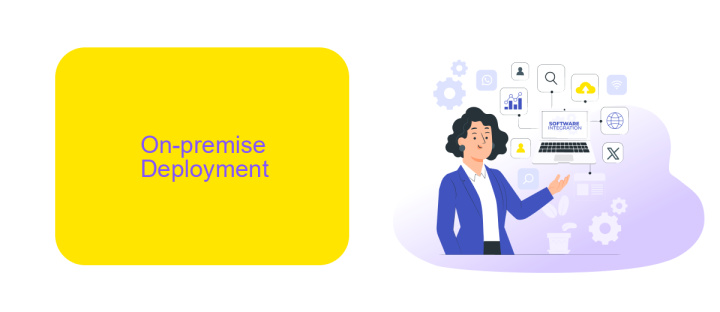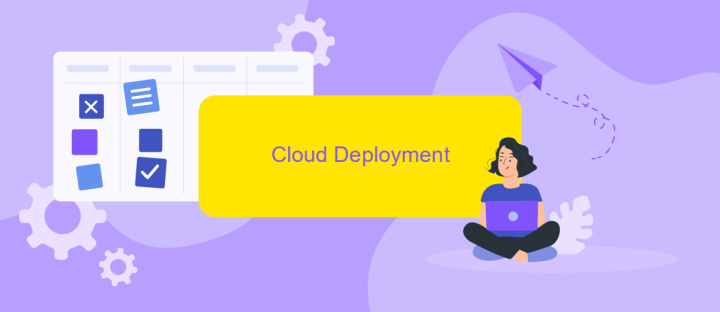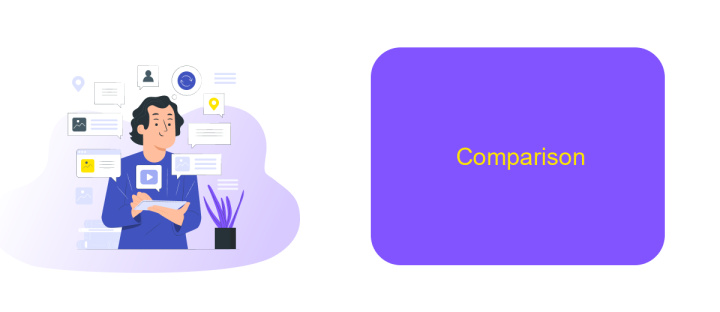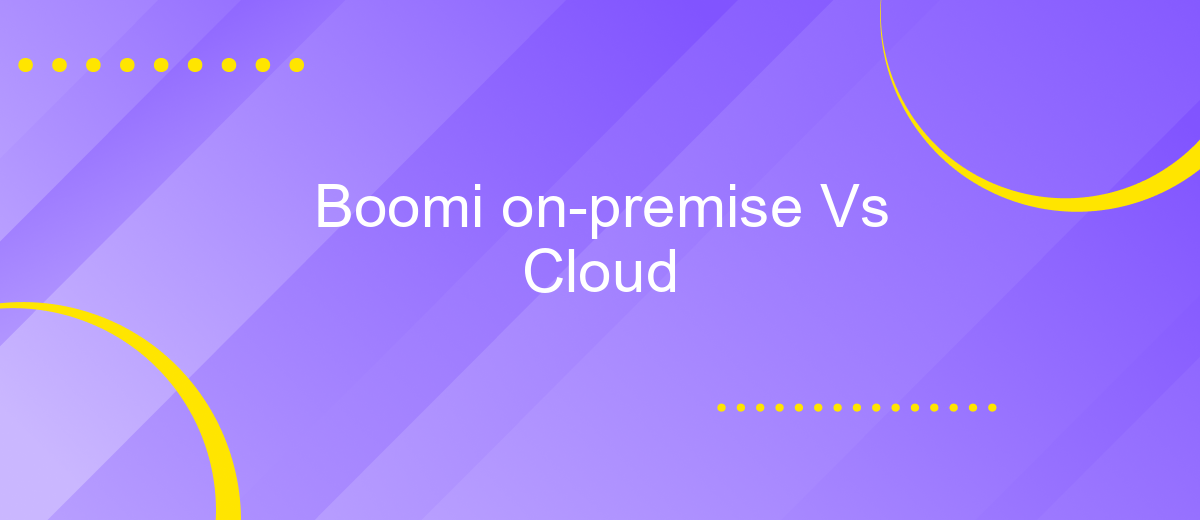Boomi on-premise Vs Cloud
In today's rapidly evolving technological landscape, businesses face crucial decisions regarding their integration platforms. Boomi, a leading integration solution, offers both on-premise and cloud-based options. This article delves into the key differences, benefits, and challenges of Boomi on-premise versus cloud deployments, helping organizations make informed choices that align with their unique needs and strategic goals.
Introduction
In today's rapidly evolving technological landscape, businesses are constantly seeking efficient ways to integrate various applications and systems. Boomi, a renowned integration platform, offers both on-premise and cloud-based solutions to meet diverse organizational needs. Understanding the differences between these two deployment models is crucial for making an informed decision.
- On-Premise: Provides greater control over data and infrastructure, suitable for organizations with stringent security requirements.
- Cloud: Offers scalability, flexibility, and reduced maintenance costs, ideal for businesses looking for agility and ease of use.
Choosing between Boomi on-premise and cloud solutions depends on factors such as data sensitivity, regulatory compliance, and budget constraints. Additionally, leveraging integration services like ApiX-Drive can further streamline the process, offering seamless connectivity between various applications regardless of the deployment model chosen. By carefully evaluating these aspects, businesses can optimize their integration strategy to achieve maximum efficiency and productivity.
On-premise Deployment

On-premise deployment involves installing and maintaining Boomi software on local servers within an organization's own data center. This approach allows for greater control over data security, compliance, and system performance, as the infrastructure is managed internally. Organizations can tailor the deployment to meet specific needs, ensuring that sensitive information remains within their own controlled environment. This method is particularly beneficial for industries with strict regulatory requirements, such as finance and healthcare.
Managing on-premise deployments can be complex and resource-intensive, requiring dedicated IT staff for maintenance, updates, and troubleshooting. However, tools like ApiX-Drive can simplify the process by providing seamless integration solutions that bridge various systems and applications. ApiX-Drive's user-friendly interface and robust automation capabilities help streamline workflows and reduce the manual effort required for integration tasks. This makes it easier for organizations to maintain efficient operations while leveraging the benefits of an on-premise setup.
Cloud Deployment

Deploying Boomi in the cloud offers numerous advantages, such as scalability, flexibility, and reduced infrastructure management. Cloud deployments enable organizations to swiftly adapt to changing business needs and leverage the latest innovations in integration technology without the overhead of maintaining physical servers. This approach also ensures high availability and disaster recovery capabilities, essential for mission-critical applications.
- Scalability: Easily scale resources up or down based on demand.
- Cost Efficiency: Pay only for the resources you use, reducing capital expenditure.
- Accessibility: Access your integration platform from anywhere with an internet connection.
- Security: Benefit from robust security measures implemented by cloud service providers.
- Integration: Utilize services like ApiX-Drive to streamline integration processes and automate workflows effortlessly.
By leveraging cloud deployment for Boomi, organizations can focus on their core business activities while enjoying the benefits of a robust, scalable, and secure integration platform. Tools like ApiX-Drive enhance this experience by providing seamless integration capabilities, making it easier to connect various applications and automate business processes efficiently.
Comparison

When comparing Boomi on-premise and cloud solutions, it's essential to understand their fundamental differences and how they impact business operations. Boomi on-premise offers greater control over data and integration processes, making it suitable for organizations with stringent security requirements and existing infrastructure investments.
On the other hand, Boomi cloud solutions provide scalability, flexibility, and reduced maintenance overhead. These benefits are particularly appealing for businesses looking to minimize IT resource allocation and leverage cloud-native features. Additionally, cloud solutions often come with built-in disaster recovery and automatic updates, ensuring continuous improvement and reliability.
- Control: On-premise offers more control over data and processes.
- Scalability: Cloud solutions are more scalable and flexible.
- Maintenance: Cloud reduces the need for IT maintenance.
- Security: On-premise is ideal for stringent security needs.
- Updates: Cloud solutions include automatic updates and improvements.
Moreover, integrating tools like ApiX-Drive can enhance both on-premise and cloud setups by simplifying the integration process and reducing the time required for deployment. ApiX-Drive offers a user-friendly interface and robust features that streamline data synchronization across various platforms, making it a valuable addition to any integration strategy.
Conclusion
In conclusion, choosing between Boomi on-premise and cloud solutions depends largely on your organization's specific needs and infrastructure. On-premise solutions offer greater control and customization, which can be crucial for businesses with stringent security requirements or legacy systems. However, they often come with higher maintenance costs and require dedicated IT resources.
On the other hand, cloud-based Boomi solutions provide scalability, flexibility, and ease of access, making them ideal for companies looking to reduce overhead and improve operational efficiency. Moreover, services like ApiX-Drive can further enhance cloud integration by simplifying the process of connecting various applications and automating workflows. Ultimately, the decision should be guided by a thorough assessment of your business objectives, resources, and long-term strategy.
FAQ
What is the main difference between Boomi on-premise and Boomi Cloud?
Which option is more cost-effective, on-premise or cloud?
How does data security compare between Boomi on-premise and Boomi Cloud?
Can I switch from Boomi on-premise to Boomi Cloud easily?
Which deployment model is better for scalability?
Time is the most valuable resource for business today. Almost half of it is wasted on routine tasks. Your employees are constantly forced to perform monotonous tasks that are difficult to classify as important and specialized. You can leave everything as it is by hiring additional employees, or you can automate most of the business processes using the ApiX-Drive online connector to get rid of unnecessary time and money expenses once and for all. The choice is yours!

